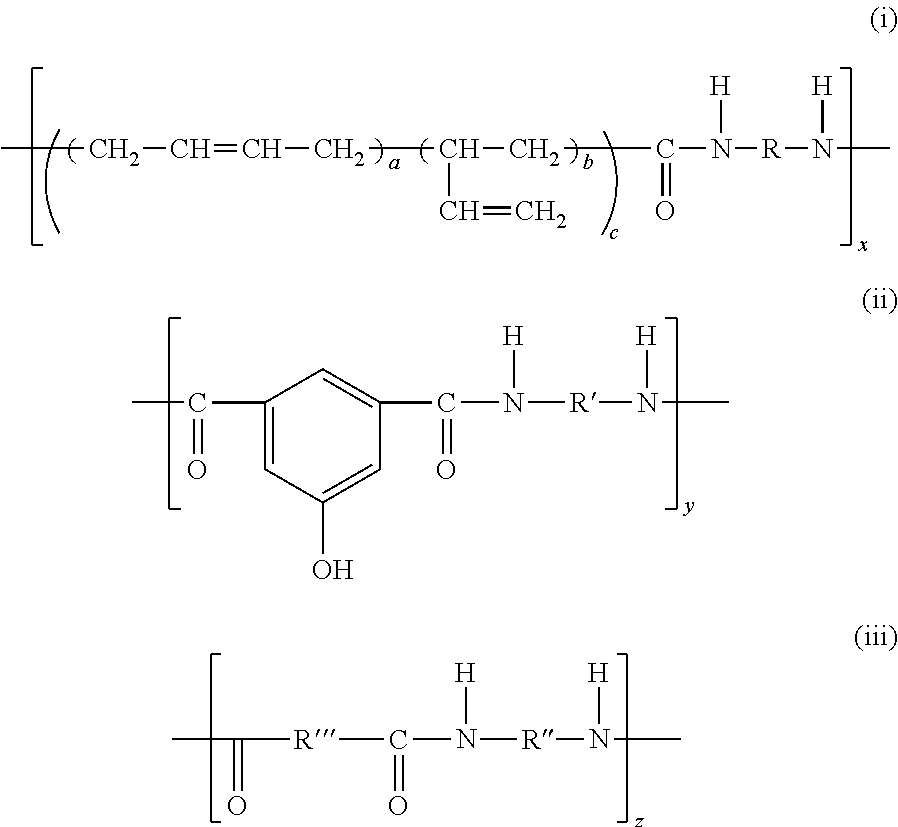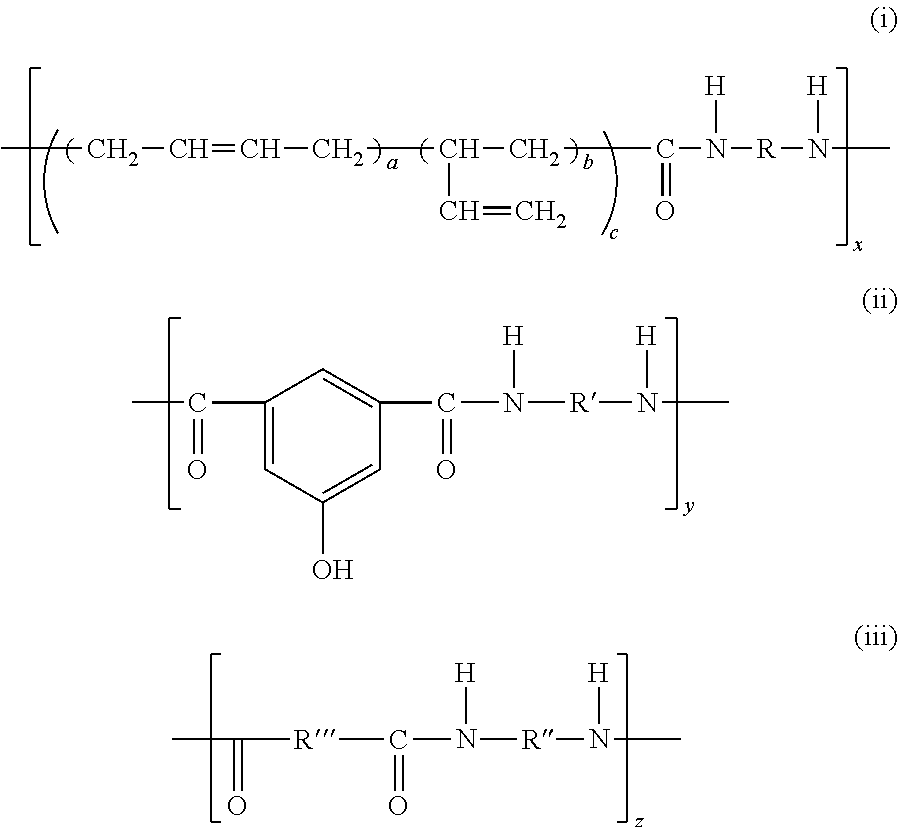Primer layer for plating process, laminate for circuit board and production method for same, and multilayer circuit board and production method for same
a plating process and circuit board technology, applied in the direction of synthetic resin layered products, vehicle sealing arrangements, animal housings, etc., can solve the problems of short circuit failure or open failure, insufficient response to achieve more fine wiring, and inability to manufacture multi-layer wiring boards in a good yield. , to achieve the effect of high heat resistance, high adhesiveness and high density of wiring
- Summary
- Abstract
- Description
- Claims
- Application Information
AI Technical Summary
Benefits of technology
Problems solved by technology
Method used
Image
Examples
preparation example 1
[0090]6.75 g of N,N-dimethylacetamide (DMAc) was blended with 0.75 g of a phenolic hydroxyl group-containing polybutadiene-modified polyamide (a trade name: BPAM-155, manufactured by Nippon Kayaku Co., Ltd.) as the component (C); 10 g of a biphenyl aralkyl type epoxy resin (a trade name: NC-3000H, manufactured by Nippon Kayaku Co., Ltd.) as the component (A), 4.1 g of a cresol novolak type phenol resin (a trade name: KA-1165, manufactured by DIC Corporation) as the component (B), and 0.1 g of 2-phenylimidazole (a trade name: 2PZ, manufactured by Shikoku Chemicals Corporation) as a curing accelerator were then added; and thereafter, the mixture was diluted with a mixed solvent consisting of DMAc and methyl ethyl ketone, thereby obtaining a resin varnish A for primer layer for plating process (solid content concentration: about 25% by mass).
preparation example 2
[0091]13.5 g of N,N-dimethylacetamide (DMAc) was blended with 1.5 g of a phenolic hydroxyl group-containing polybutadiene-modified polyamide (a trade name: BPAM-155, manufactured by Nippon Kayaku Co., Ltd.) as the component (C); 10 g of a biphenyl aralkyl type epoxy resin (a trade name: NC-3000H, manufactured by Nippon Kayaku Co., Ltd.) as the component (A), 3.6 g of a novolak type phenol resin (a trade name: TD-2090, manufactured by DIC Corporation) as the component (B), 0.1 g of 2-phenylimidazole (a trade name: 2PZ, manufactured by Shikoku Chemicals Corporation) as a curing accelerator, and 0.9 g of fumed silica (a trade name: R972, manufactured by Nippon Aerosil Co., Ltd.) were then added; and thereafter, the mixture was diluted with a mixed solvent consisting of DMAc and methyl ethyl ketone (solid content concentration: about 25% by mass). Thereafter, a uniform resin varnish B for primer layer for plating process was obtained using a disperser (a trade name: NANOMIZER, manufactu...
preparation example 3
[0092]A resin varnish C for primer layer for plating process (solid content concentration: about 25% by mass) was obtained in the same manner as that in Preparation Example 2, except that the epoxy resin curing agent as the component (B) was changed to bisphenol A novolak (a trade name: YLH129, manufactured by Mitsubishi Chemical Corporation), and the components were blended in an amount shown in Table 1.
PUM
| Property | Measurement | Unit |
|---|---|---|
| thickness | aaaaa | aaaaa |
| average primary particle diameter | aaaaa | aaaaa |
| Ra | aaaaa | aaaaa |
Abstract
Description
Claims
Application Information
 Login to View More
Login to View More - R&D
- Intellectual Property
- Life Sciences
- Materials
- Tech Scout
- Unparalleled Data Quality
- Higher Quality Content
- 60% Fewer Hallucinations
Browse by: Latest US Patents, China's latest patents, Technical Efficacy Thesaurus, Application Domain, Technology Topic, Popular Technical Reports.
© 2025 PatSnap. All rights reserved.Legal|Privacy policy|Modern Slavery Act Transparency Statement|Sitemap|About US| Contact US: help@patsnap.com



